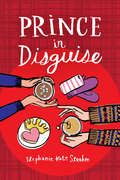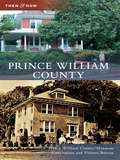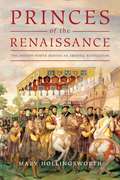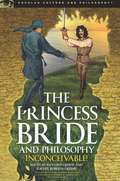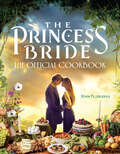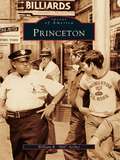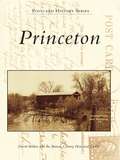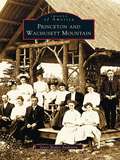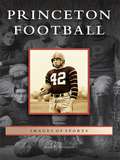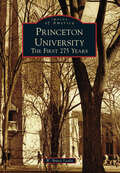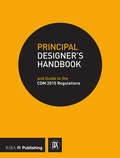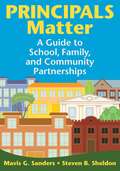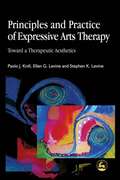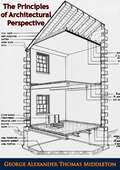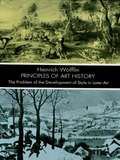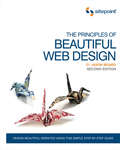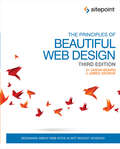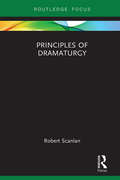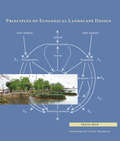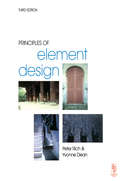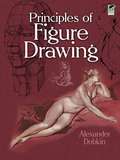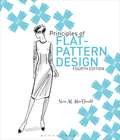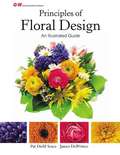- Table View
- List View
Prince in Disguise
by Stephanie Kate StrohmSomeday I want to live in a place where I never hear "You're Dusty's sister?" ever again. Life is real enough for Dylan-especially as the ordinary younger sister of Dusty, former Miss Mississippi and the most perfect, popular girl in Tupelo. But when Dusty wins the hand of the handsome Scottish laird-to-be Ronan on the TRC television network's crown jewel, Prince in Disguise, Dylan has to face a different kind of reality: reality TV.As the camera crew whisks them off to Scotland to film the lead-up to the wedding, camera-shy Dylan is front and center as Dusty's maid of honor. The producers are full of surprises-including old family secrets, long-lost relatives, and a hostile future mother-in-law who thinks Dusty and Dylan's family isn't good enough for her only son. At least there's Jamie, an adorably bookish groomsman who might just be the perfect antidote to all Dylan's stress . . . if she just can keep TRC from turning her into the next reality show sensation.
Prince William County
by Prince William County/Manassas Convention and Visitors BureauPrince William County, just south of Washington, D.C., has changed dramatically over the years. The area welcomes thousands of visitors annually to historic sites and is home to thousands more residents. This volume takes readers on a journey through the county that preserves its past with an eye to the future.
Princes of the Renaissance: The Hidden Power Behind an Artistic Revolution
by Mary HollingsworthA vivid history of the lives and times of the aristocratic elite whose patronage created the art and architecture of the Italian Renaissance.The fifteenth and sixteenth centuries was an era of dramatic political, religious, and cultural change in the Italian peninsula, witnessing major innovations in the visual arts, literature, music, and science. Princes of the Renaissance charts these developments in a sequence of eleven chapters, each of which is devoted to two or three princely characters with a cast of minor ones—from Federigo da Montefeltro, Duke of Urbino, to Cosimo I de' Medici, Duke of Florence, and from Isabella d'Este of Mantua to Lucrezia Borgia. Many of these princes were related by blood or marriage, creating a web of alliances that held Renaissance society together—but whose tensions could spark feuds that threatened to tear it apart. A vivid depiction of the lives and times of the aristocratic elite whose patronage created the art and architecture of the Renaissance, Princes of the Renaissance is a narrative that is as rigorous and definitively researched as it is accessible and entertaining. Perhaps most importantly, Mary Hollingsworth sets the aesthetic achievements of these aristocratic patrons in the context of the volatile, ever-shifting politics of an age of change and innovation.
The Princess Bride and Philosophy: Inconceivable!
by Richard Greene Rachel Robison-GreeneThe Princess Bride is the 1987 satirical adventure movie that had to wait for the Internet and DVDs to become the most quoted of all cult classics. <P><P> The Princess Bride and Philosophy is for all those who have wondered about the true meaning of "Inconceivable!," why the name "Roberts" uniquely inspires fear, and whether it's truly a miracle to restore life to someone who is dead, but not necessarily completely dead. The Princess Bride is filled with people trying to persuade each other of various things, and invites us to examine the best methods of persuasion. It's filled with promises, some kept and some broken, and cries out for philosophical analysis of what makes a promise and why promises should be kept. It's filled with beliefs which go beyond the evidence, and philosophy can help us to decide when such beliefs can be justified. It's filled with political violence, both by and against the recognized government, and therefore raises all the issues of political philosophy. Westley, Buttercup, Prince Humperdinck, Inigo Montoya, the giant Fezzik, and the Sicilian Vizzini keep on re-appearing in these pages, as examples of philosophical ideas. Is it right for Montoya to kill the six-fingered man, even though there is no money in the revenge business? What's the best way to deceive someone who knows you're trying to deceive him? Are good manners a kind of moral virtue? Could the actions of the masked man in black truly be inconceivable even though real? What does ethics have to say about Miracle Max's pricing policy? How many shades of meaning can be conveyed by "As You Wish"?
The Princess Bride: The Official Cookbook
by Jenn Fujikawa"As you dish!"Few films have captured the hearts and imaginations like The Princess Bride. Based on the book by William Goldman, the 1987 film, directed by Rob Reiner and starring Cary Elwes, Robin Wright, Mandy Patinkin, Billy Crystal, Andre the Giant, Carol Kane, Chris Sarandon, Wallace Shawn, Christopher Guest, Fred Savage, and Peter Falk is as universally beloved as it is quotable. Now, for the first time, The Princess Bride Cookbook: The Official Cookbook features more than 50 recipes for dishes seen in, and inspired by, the film, including: Buttercup Buttermilk SconesHash You WishFarm Boy BreakfastSix-Fingered SandwichesChips of InsanityMLTThe Grandson&’s Soup and SandwichVizzini&’s Sicilian MeatballsFezzik&’s StewThe Spaniard&’s PaellaBread Pirate RobertsTwu Wove&’s Kiss CookiesIocane Powder PunchInigo Montoya&’s Taste of Revenge Perfect for fans, families, and Brute Squads, The Princes Bride: The Official Cookbook is the ultimate way for home cooks to plate up the adventure, comedy, and romance of everyone&’s favorite film.
Princeton
by William R. ArcherThroughout its existence, Princeton has been a community at a unique three-way intersection connecting the heart of the Allegheny Mountain range with the fertile Valley of the Virginias to the east and the Cumberland Gap to the west. In 1837, the Virginia General Assembly formed Mercer County, named in memory of Revolutionary War general Hugh Mercer; at the same time, the county's seat was named in honor of the Battle of Princeton, New Jersey, the 1777 battle in which General Mercer died. Twenty-five years after the county's formation, retreating Confederate soldiers burned the homes of the town of Princeton to the ground. The coming of the Virginian Railroad in the first decade of the 20th century and the construction of the West Virginia Turnpike 40 years later transformed Princeton from a remote rural outpost into a vibrant center of commerce and ultimately led to the evolution of Princeton into a true crossroads for the region.
Princeton
by Dave Belden Bureau County Historical SocietyIn 1831, the settlement of Princeton, Illinois, began as families from New England, and later the Mid-Atlantic states, traveled West seeking good land. These early settlers built the Hampshire Colony Congregational Church. Rev. Owen Lovejoy, one of its earliest pastors, became a well-known abolitionist and used his Princeton home to harbor runaway slaves. Before the Civil War, Princeton citizens convinced Burlington Railroad to lay rails within a mile of their town. The community expanded its main street to meet the railroad and insure the town's growth. Today Princeton remains a richly endowed and vital community, set in the peaceful countryside of North Central Illinois.
Princeton and Wachusett Mountain (Images of America)
by Joyce Bailey AndersonIn 1632, after climbing up the face of a boulder near present-day Waltham and facing west toward Neipnett, Gov. John Winthrop sighted Wachusett Mountain rising against the setting sun. However, the idea of a town did not take hold until 1742, when the first settler, Joshua Wilder, arrived from Lancaster and established a tavern. By the mid-1800s, magnificent hotels and guesthouses dotted Princeton's landscape. Princeton and Wachusett Mountain shows the early days of tourism when visitors from Boston, New York, and Philadelphia rode stagecoaches to relax in the shade, play croquet on the common, and breathe country air. The village of East Princeton, meanwhile, flourished differently-chair factories used a fast-moving stream to run machines, and farmers worked the fields. Village life was simple and focused on family and the earth.
Princeton Football (Images of Sports)
by Mark F. BernsteinPrinceton played the first intercollegiate football game in 1869 and, since then, has gone on to win 28 national championships and nine Ivy League titles. Over the last 140 years, Princeton's Tigers have produced a Heisman Trophy winner, scores of All-Americans, and some of the game's greatest legends. From soldier of fortune Johnny Poe to tragic hero Hobey Baker to Charlie Gogolak, one of the first soccer-style kickers, Princeton Football captures the players, coaches, games, and stadiums that have made the Tigers one of the most storied programs in all of college football.
Princeton University: The First 275 Years (Images of America)
by W. Bruce LesliePrinceton is only the fourth American college to celebrate a 275th anniversary. Founded in 1746 as the College of New Jersey, it has long Presbyterian roots. The scene of notable events in the American Revolution, it was a classical college for another century. Then, at its 1896 sesquicentennial, it became Princeton University and in succeeding decades developed into a world-leading research university. Long an institution of males of European descent, its gender and ethnic makeup has changed dramatically in the last half-century. Today's Princeton combines a robust collegiate culture with a research profile near the top of international league tables--truly a rare combination.
Principal Designer's Handbook: Guide to the CDM Regulations 2015
by Association for Project SafetyThe new CDM regulations came into force on 6th April 2015 changing the face of pre-construction health and safety management on construction projects, large and small. This handbook provides a comprehensive road map to undertaking the new Principal Designer role brings pre-construction health and safety risk management into the hands of architects and other designers. Offering authoritative and straightforward guidance to carrying out these tasks, it also uses case studies and checklists to demonstrate how this can be done quickly and efficiently.
Principals Matter: A Guide to School, Family, and Community Partnerships
by Steven B. Sheldon Mavis G. SandersResearch has shown that strong principal leadership is critical to developing effective school partnerships that include diverse school, family and community members. This book provides administrators with a clear road map for initiating partnership programs that are goal-focused, equitable, and sustainable.In this research-based resource, the authors highlight the work of principals who have cultivated successful partnerships across many settings to show other school leaders how they can develop the necessary supportive school cultures. Examining the administrator's role in the success and quality of home-school partnerships and student outcomes, this guidebook: Synthesizes research on principal leadership, school and community partnerships, and urban education reform Discusses the role of fathers in children’s learning and working with families that live in poverty, are linguistically diverse, or have children with disabilities Offers practical recommendations for evaluating and refining partnership programs to ensure they are linked with student achievement goals
Principle, Design and Optimization of Air Balancing Methods for the Multi-zone Ventilation Systems in Low Carbon Green Buildings
by Xin Zhang Can Cui Wen-Jian Cai Hui Cai Gang JingThis book presents a systematic study on the air balancing technologies in heating, ventilation and air conditioning (HVAC) systems. Several modern air balancing methods, including advanced control-based air balancing, data-driven-based air balancing, and energy-saving-oriented air balancing, are introduced in this book to balance the air duct system. Furthermore, this book provides clear instructions for both HVAC designers and engineers, as well as researchers, on how to design and balance duct systems for improved performance and energy efficiency.
Principles and Practice of Expressive Arts Therapy: Toward a Therapeutic Aesthetics
by Paolo Knill Ellen Levine Stephen K LevineChallenging traditional therapeutic approaches to the arts in which art is often secondary to a psychological model, Principles and Practice of Expressive Arts Therapy provides a coherent theoretical framework for an expressive arts therapy practice that places the process of art-making and the art work itself at the center. This book lays the philosophical foundation for a fresh interpretation of art-making and the therapeutic process by re-examining the concept of poiesis. The authors clarify the methodology and theory of practice with a focus on intermodal therapy, crystallization theory and polyaesthetics, and give guidance on the didactics of acquiring practical skills. Case studies of clinical practice and guidance on supervision and training in intermodal expressive arts therapy complement the theoretical chapters. Combining philosophy, theory and practice, this book is an essential text for students and academics in the field and for practicing expressive and specialized arts therapists.
The Principles of Architectural Perspective: with Chapters on Isometric Drawings and the Preparation of Finished Perspectives
by George Alexander Thomas MiddletonAn efficiently arranged text book on perspective for the use of architectural draughtsmen. Its author, the architect G. A. T. Middleton (1861-1935), was for many years a leading figure in the Society of Architects, between 1884 and 1925 an independent breakaway group from the RIBA.
Principles of Art History
by Heinrich WölfflinOriginally published in Germany during the 1920s, this now-classic study surveys the works of 64 major artists in terms of style, quality, and mode of representation. A brilliant contribution to the methodology or art criticism, it features 120 black-and-white illustrations of works by Botticelli, Durer, Holbein, Rembrandt, Velasquez, Vermeer, and others.
The Principles of Beautiful Web Design: 101 Essential Tips, Tricks And Hacks
by Jason BeairdThis second edition of The Principles of Beautiful Web Design is the ideal book for people who can build websites, but are seeking the skills and knowledge to visually enhance their sites.This book will teach you how to:Understand the process of what makes "good design," from discovery through to implementationUse color effectively, develop color schemes, and create a paletteCreate pleasing layouts using grids, the rule of thirds, and symmetryEmploy textures: lines, points, shapes, volumes, and depthApply typography to make ordinary designs look greatChoose, edit, and position effective imageryAnd lots more...This revised, easy-to-follow guide is illustrated with beautiful, full-color examples, and leads readers through the process of creating great designs from start to finish.It also features:Updated information about grid-based designHow to design for mobile resolutionsInformation about the future of web fonts including @font-faceCommon user-interface patterns and resources
The Principles of Beautiful Web Design: Designing Great Web Sites is Not Rocket Science!
by Jason Beaird James GeorgeThe Principles of Beautiful Web Design is the ideal book for people who can build websites, but are seeking the skills and knowledge to visually enhance their sites.This book will teach you how to:Understand what makes "good design," from discovery through to implementationUse color effectively, develop color schemes, and create a paletteCreate pleasing layouts using grids, the rule of thirds, and symmetryEmploy textures: lines, points, shapes, volumes, and depthApply typography to make ordinary designs look greatChoose, edit, and position effective imageryAnd lots more...This easy-to-follow guide is illustrated with beautiful, full-color examples, and will lead you through the process of creating great designs from start to finish. The third edition of this book has been greatly revised and now features:Updated and expanded coverage of mobile and responsive web design (RWD)A new sample projectNew sections on user interface and icon designCommon user-interface patterns and resources
Principles of Dramaturgy (Focus on Dramaturgy)
by Robert ScanlanIn Principles of Dramaturgy, Robert Scanlan explains the invariant principles behind the construction of stage and performance events of any style or modality. This book contains all that is essential for training a professional stage director and/or dramaturg, including the "plot-bead" technique for analyzing play scripts developed by Scanlan. It details all the steps for the full implementation of "Production Dramaturgy" as it is practiced in professional theatres, and treats form and action as foundational cornerstones of all performance, rather than "story" elements – a frequent and debilitating misprision in theatre practice. Scanlan’s unique approach offers practical training that is supported by detailed diagrams and contextualized instructions, making this the missing text for classes in dramaturgy. Serving stage directors, dramaturgs, actors, designers, and playwrights, Principles of Dramaturgy is a comprehensive guide that puts the training of capable practitioners above all else.
Principles of Ecological Landscape Design
by Travis BeckToday, there is a growing demand for designed landscapes--from public parks to backyards--to be not only beautiful and functional, but also sustainable. With Principles of Ecological Landscape Design, Travis Beck gives professionals and students the first book to translate the science of ecology into design practice. This groundbreaking work explains key ecological concepts and their application to the design and management of sustainable landscapes. It covers topics from biogeography and plant selection to global change. Beck draws on real world cases where professionals have put ecological principles to use in the built landscape. For constructed landscapes to perform as we need them to, we must get their underlying ecology right. Principles of Ecological Landscape Design provides the tools to do just that.
Principles of Ecological Landscape Design
by Carol Franklin Travis BeckToday, there is a growing demand for designed landscapes--from public parks to backyards--to be not only beautiful and functional, but also sustainable. Sustainability means more than just saving energy and resources. It requires integrating the landscapes we design with ecological systems. With Principles of Ecological Landscape Design, Travis Beck gives professionals and students the first book to translate the science of ecology into design practice. This groundbreaking work explains key ecological concepts and their application to the design and management of sustainable landscapes. It covers biogeography and plant selection, assembling plant communities, competition and coexistence, designing ecosystems, materials cycling and soil ecology, plant-animal interactions, biodiversity and stability, disturbance and succession, landscape ecology, and global change. Beck draws on real world cases where professionals have put ecological principles to use in the built landscape. The demand for this information is rising as professional associations like the American Society of Landscape Architects adopt new sustainability guidelines (SITES). But the need goes beyond certifications and rules. For constructed landscapes to perform as we need them to, we must get their underlying ecology right. Principles of Ecological Landscape Design provides the tools to do just that.
Principles of Element Design
by Yvonne Dean Peter RichThe construction of buildings is learnt through experience and the inheritance of a tradition in forming buildings over several thousand years. Successful construction learns from this experience which becomes embodied in principles of application. Though materials and techniques change, various elements have to perform the same function. 'Principles of Element Design' identifies all the relevant elements and then breaks these elements down into all their basic constituents, making it possible for students to fully understand the given theory and principles behind each part. As all building projects are subject to guidance through the Building Regulations and British Standards, this book gives an immediate reference back to relevant information to help practitioners and contractors identify key documents needed.Yvonne Dean B.A. (Hons) B.A (Open) RIBA, an architect, energy consultant and materials technologist. She also has 15 years experience as a lecturer, travels widely and is a guest lecturer at many universities. She pioneered an access course for Women into Architecture and Building, which has been used as a template by others, and has been instrumental in helping to change the teaching of technology for architects and designers.Peter Rich AA Dipl. (Hons) Architect, started his career with 14 years experience as a qualified architectural technician. He then joined the AA School of Architecture, working with Bill Allen and John Bickerdike after his graduation, later becoming a partner of Bickerdike Allen Rich and Partners. He also taught building construction at the Bartlett School of Architecture, University College London, and architectural design at the Polytechnic of North London. He now acts as a Consultant.
Principles of Figure Drawing
by Alexander DobkinWritten by a noted author and instructor, this guide for intermediate to advanced students presents the fundamentals of figure drawing in a lucid, practical manner. Each step in the construction and artistic representation of the human figure is fully explained and illustrated. Topics include such vital aspects as proportion, bone and muscle structure, limbs, head and neck, male and female figures, action and motion, and the draped figure. This volume ranks among the most complete and useful guides to figure drawing. Its wealth of illustrations ranges from diagrams to anatomical drawings to photographs, along with a rich gallery of work by the great masters. Examples include drawings from the works of Leonardo and Vesalius as well as Picasso, Modigliani, Rubens, Rembrandt, and dozens of other distinguished artists.
Principles Of Flat Pattern Design
by Nora M. MacDonaldThe basic principles of the flat-pattern method are the foundation of producing effective apparel designs. Principles of Flat-Pattern Design, 4th Edition, maintains its simple and straightforward presentation of flat-patternmaking principles which is proven to be less intimidating for beginning students. Numbered and fully illustrated steps guide students through a logical series of pattern manipulation procedures, each beginning with a flat sketch of the design to be developed and ending with a representation of the completed pattern. A significant expansion of the introductory chapters in this 4th Edition aligns the patternmaking process with current industry practices, including technological advancements, design analysis, and production basics such as grading, marker making, and specifications.
Principles of Floral Design: An Illustrated Guide
by Pat Diehl Scace James M. DelPrinceNIMAC-sourced textbook
